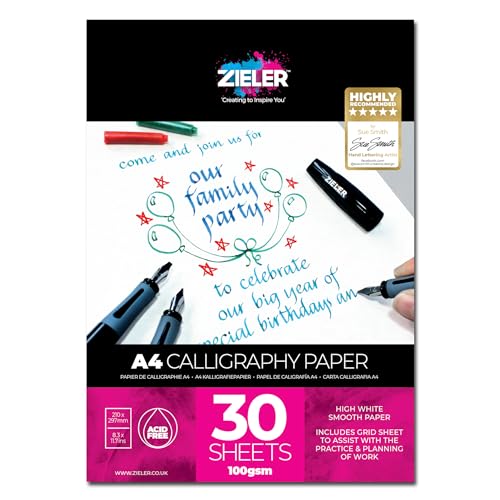Why Storing Calligraphy Paper is Important?
Calligraphy paper is a delicate and valuable material that requires proper handling and storage to maintain its quality. Storing calligraphy paper properly can prevent unwanted wear and tear, discoloration or damage due to moisture, light, or temperature. Whether you are a professional calligrapher, a beginner or a hobbyist, it is important to know how to store calligraphy paper to ensure its longevity and usability.
How to Choose the Right Storage Materials for Calligraphy Paper?
The first step in storing calligraphy paper is to choose the right storage materials. You can use acid-free and lignin-free paper folders, envelopes, or archival boxes to protect your calligraphy paper from environmental pollutants and degradation. These materials are designed to prevent acid migration or chemical reactions that can cause yellowing, brittleness, or fading of the paper over time. Make sure to choose storage materials that are slightly larger than your calligraphy paper to avoid creases, bending or folding.
What is the Ideal Environment to Store Calligraphy Paper?
Calligraphy paper should be kept in a dry and cool environment, away from direct sunlight, heat sources, and excessive humidity. Avoid storing your calligraphy paper in damp basements, attics or near windowsills, as these areas can expose the paper to moisture, mold, or insects. Instead, store your calligraphy paper in a climate-controlled room with a consistent temperature and low humidity. Consider using a dehumidifier or air conditioning unit to maintain a suitable environment for your calligraphy paper.
How to Arrange Calligraphy Paper for Storage?
Before storing your calligraphy paper, make sure to arrange it in a way that minimizes the risk of damage or wrinkling. You can use protective sheets of tissue paper or acid-free interleaving to separate and cushion your calligraphy paper. Avoid using regular paper or plastic wrap, as they can trap moisture and cause smudging, sticking, or ink bleeding. Keep your calligraphy paper flat or rolled up if it is larger than the storage container. Do not stack heavy items on top of the container or expose it to pressure or weight.
What are Some Common Mistakes in Storing Calligraphy Paper?
Some common mistakes in storing calligraphy paper include using inadequate or cheap storage materials, exposing the paper to harsh environments or chemicals, stacking or cramming the paper in a tight space, or neglecting to organize or label the stored items. Always choose high-quality archival materials, store your paper in a suitable climate-controlled environment, and keep your storage container clean and labeled. Avoid using tape or glue to attach notes or labels to the paper, as they can cause damage or discoloration over time.






